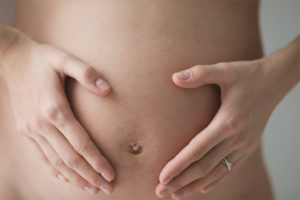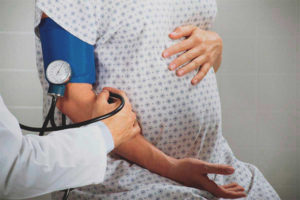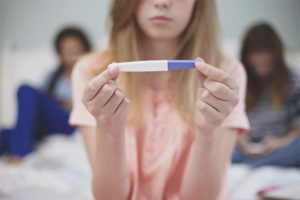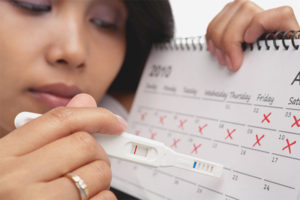The content of the article
Pregnancy is a unique period of life for any woman, especially if the baby is the first. Each expectant mother prepares for her birth in her own way, someone collects huge trunks in the hospital, trying to predict what she and the baby might need in the first three days. The other is emotionally tuned, because the upcoming birth is not just a physical shock, but also a powerful psychological surge. Few people manage to approach the birth without worries and worries. Most often, women are afraid that they will miss significant symptoms and moments that indicate the onset of childbirth. Recently, women have stopped going to maternity hospitals at the place of residence, and are trying to give birth to trusted, familiar doctors who led the entire pregnancy and know the features of this female body. This is the right of every woman, however, if you are going to a maternity hospital, which is at a decent distance from your home, you need to carefully listen to your body.
Symptoms of the onset of childbirth
It is proved that only every tenth child is born according to the stipulated deadline. All other babies are born when they feel like it, many factors can contribute to this. In the medical practice of gynecologists there was a woman who arrived at the maternity hospital at 37 weeks with the waters that had flowed away. It turns out that the day before he and her husband watched a comedy film and from hearty laughter and tension of the abdomen, childbirth began, for which the body was not ready. Fortunately, it all ended happily. Sex, uncharacteristic physical exertion, emotional upheaval, and other provoking factors can contribute to early childbirth. But how to recognize that the body is preparing for childbirth? Are there any special signals? Of course, nature arranged everything in an ideal way - the body itself prepares for childbirth. We will tell you about some special signs that may indicate an upcoming birth.
- Slight relief. 7-10 days before the upcoming birth, the fetus begins to descend into the small pelvis, the woman feels some relief, because the pressure on the stomach, lungs, diaphragm decreases. It may seem to her that it has become easier to walk and even breathe.
- Contraction of the uterus. The closer the delivery period, the more often the uterus begins to contract. This does not mean that you need to run to the hospital immediately, because the reduction can last more than one week. Usually this manifests itself as follows - the stomach becomes hard and, as it were, shrinks for several minutes. Sometimes the contraction can last a couple of hours, after which the abdomen again becomes more supple and soft.
- Contractions. The surest sign of the beginning of labor is labor. However, they do not immediately become strong and painful. It all starts with a slight sip in the lower abdomen, as with menstruation. The pain is initially small, quite tolerable, so the cervix opens. Not only the stomach, but also the lower back can hurt, depending on where the placenta is attached. Moderate pain does not mean that you should experience it at home. It’s better to go to the hospital and be supervised by a doctor. Women who give birth again can experience a very short period of labor - literally several hours can pass from the first pain to childbirth. Therefore, multiparous women should contact the hospital as soon as possible. In addition, there are false contractions. These are absolutely physiological and real pains, and not a figment of the fantasies of a pregnant woman. The only difference between false contractions and real ones is that they are not systematic, proceed in a chaotic manner, less painful, and do not increase.
- Emotional condition. It is difficult not to note, however, the mood of a woman often speaks for itself. Closer to delivery, she is already completely ready for the process and dreams of when the long-awaited moment will come. This is because with the growth of the fetus, a woman becomes more and more uncomfortable. It’s hard for her to walk, heartburn is activated, it’s hard to lie. A few days before giving birth, a woman experiences a peak of discomfort and is psychologically ready for childbirth.
- Diarrhea. About a day before birth, many women begin to clear their intestines. Some suggest that this is just a reaction to nervous experiences. But it’s not so simple. Closer to childbirth, changes occur in the body, primarily hormonal. These hormones regulate labor and prepare the intestines, emptying it. This creates additional conditions for the unhindered passage of the fetus through the birth canal. This is due to the lack of appetite in women.
- Allocations. Closer to childbirth (although this is not a prerequisite), a woman may appear discharge - brown, transparent, abundant. If they are accompanied by fights, most likely you will give birth in the next day.
- Water discharge. Water can flow right before the attempts, but it happens that the bubble bursts before the uterus begins to contract and the neck opens. It is difficult to confuse the water discharge with something else, the sensation is the same as when urinating, but you cannot stop this process - it does not depend on your desire. The amount of water is quite large - even a large night laying usually does not cope or it lasts for literally an hour.
- Urination. Closer to delivery, the uterus with the fetus descends lower, exerting increasing pressure on the bladder. Often women literally sit near the toilet, as urges occur very often, sometimes leading to banal incontinence.
- Bung. This is a mucous clot that was previously located in the cervix. The cork may come off directly during childbirth or two weeks before it. The size of the cork can be different - usually it is about 1-2 cm. The color also varies from transparent to blood. Usually a woman sees a cork that has fallen away on her underwear.
These are the main signs that can appear from 14 days before childbirth, and just before the delivery.
When to go to the hospital
So if the cork can go away a few weeks before delivery, is it really necessary to go to the hospital and lie there for so long? Here are some signs that should immediately go to the hospital.
- If bleeding started, the color of the blood secreted turned scarlet.
- If the contractions are rhythmic and between them equal intervals of time less than 10 minutes.
- You should go to the hospital at the slightest suspicion, if the pregnancy is repeated - in this case, childbirth develops rapidly.
- If you have a planned cesarean section, for any symptoms of labor that has begun, you should go to your doctor as soon as possible.
- Water discharge is a good symptom for immediate hospitalization, even if there are no contractions yet.
- After 41 weeks of pregnancy, any changes in well-being and the body should send you to the hospital.
- Acute pain that does not go away for a long time is considered a pathology and is also a reason for urgent hospitalization.
- Any chronic diseases and abnormalities should be supervised by a physician. In such cases, in late pregnancy it is better to be in a hospital. This may include gestosis, polyhydramnios and low water, eclampsia, renal or heart failure in the mother, intrauterine pathologies in the baby, incorrect position of the fetus, etc.
- In addition, if a woman lives far from the hospital or is at home alone, at the slightest sign of the onset of labor, you should consult a doctor.
Closer to childbirth, you need to decide where you want to give birth - at your observing obstetrician-gynecologist or just at the place of residence. If you have chosen the first case, you need to be in touch with the doctor. Be sure to calculate the backup option - where will you go to give birth if the doctor suddenly does not answer the call (there may be different situations in life) or the maternity hospital closes at the sink. Count and think through all the possible situations - who will be lucky in the hospital if her husband is sent on a business trip, with whom the eldest child will remain, who will feed the cat in your absence. This will help you calm down and protect yourself from external problems, concentrate on labor activities.
Even in ancient Rome during the time of Hippocrates, it was believed that before birth, a woman's complexion changes, especially if she is waiting for a girl. Perhaps there is some truth in this, because hormonal adjustment is in full swing. Take a look in the mirror, maybe there are answers to all your questions.
Video: how to understand that labor has begun











Submit